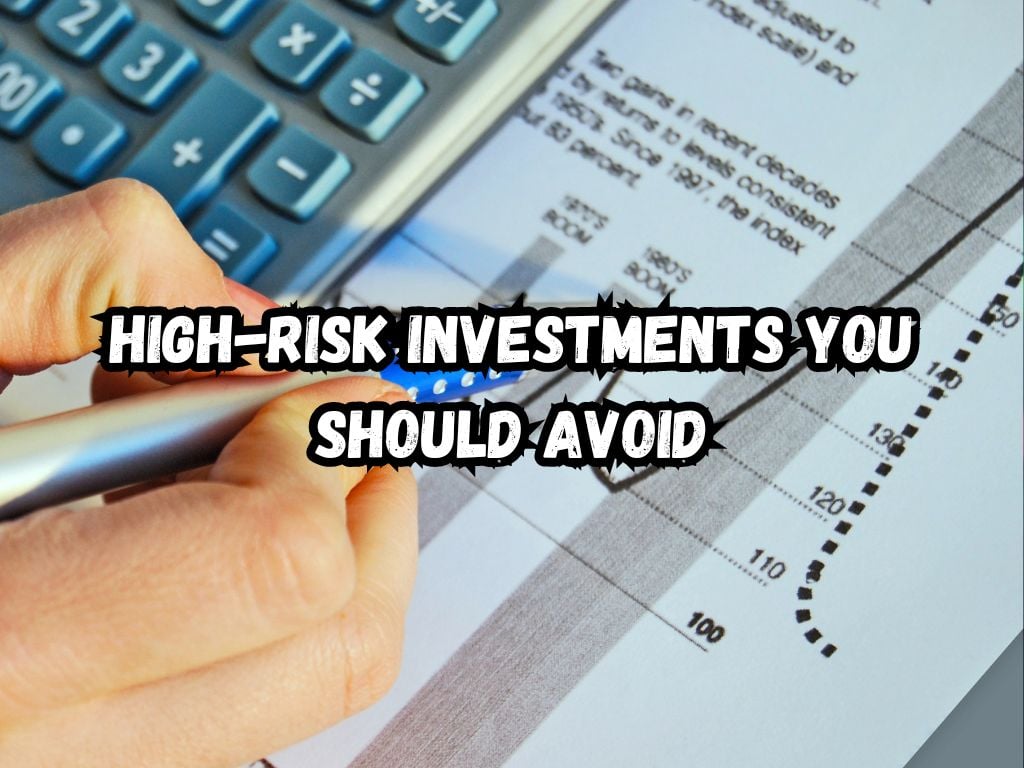High-risk investments can be a gamble that not every investor should make. This article aims to guide you through understanding high-risk investments and highlighting those you might be better off avoiding.
Let’s explore how to navigate the complex landscape of investments cautiously.
High Risk Investments You Should Avoid
High-risk investments come with the potential for high returns, which can be tempting. The flip side to this potential is a high possibility of losing your investment. Knowing what makes an investment “high-risk” is crucial.
Generally, these investments share common features, including volatility, lack of liquidity, considerable uncertainty regarding returns, and a significant risk of loss.
Types of High-Risk Investments to Avoid
Penny Stocks: These stocks trade at a very low price, often below $5. While the low price may seem inviting, penny stocks are highly speculative and can be prone to market manipulation.
Their low liquidity means they can be hard to sell when you want to. Stories abound of investors who have faced substantial losses in the penny stock market.

Highly Leveraged Investments: Using borrowed money to amplify investment outcomes can result in significant gains. However, it can also mean devastating losses.
Margin accounts and some derivative products fall into this category. When the market moves against leveraged positions, investors can lose more than their initial investment.
Non-Regulated Investment Opportunities: Investments that are not regulated by financial authorities can pose a significant risk.
For example, some cryptocurrency investment schemes and unregistered securities might promise high returns. But without regulatory oversight, the risk of fraud and loss is higher.
Structured Products: These are complex financial instruments that combine traditional investments with derivatives.
While they might promise to protect your capital or offer enhanced returns, their complexity means hidden risks are often not understood until it’s too late.
Commodities Trading: Investing in commodities like oil, gold, or wheat can be highly volatile.
Price swings can result from changes in weather, political instability, or market speculation, leading to significant investment losses.
The Allure of High Returns
The promise of quick, high returns can be tantalizing. Human psychology plays a big part in why investors might flock to high-risk investments. The thought of getting in on the ground floor of the next big thing can be compelling.
However, the reality often differs, with many learning that if an investment sounds too good to be true, it probably is.
Alternative Safe Investment Strategies
Seeking safer investment avenues doesn’t mean sacrificing all returns. Diversified mutual funds spread out investment over a range of assets, reducing risk.
Bonds offer more stable returns, with government and municipal bonds generally being safer than corporate bonds.
Index funds, which track the performance of a specific index, provide a low-risk way to invest in the stock market.
Key Considerations Before Investing
Before diving into any investment, doing your homework is essential. Understanding your own risk tolerance can help guide your investment choices.
Seeking the advice of a financial advisor can also provide tailored guidance suited to your financial situation and goals.

Pro Tips
Understanding your investments is crucial. Steer clear of investing in something you don’t fully comprehend.
A well-constructed portfolio that balances risk across various investments can help safeguard your financial health.
Finally, be wary of high-pressure sales tactics promising surefire returns. If pressured to invest quickly, it’s often a sign to proceed with caution.
Frequently Asked Questions
What makes an investment high-risk?
An investment is considered high-risk if it has a high possibility of loss, significant volatility, lacks liquidity, and has uncertain returns.
How can I identify if an investment is too risky for me?
Assessing your financial situation, understanding your risk tolerance, and researching the investment can help you identify if it’s too risky. Consulting a financial advisor is also advisable.
Are all high-return investments high-risk?
While not all high-return investments are high-risk, there is often a correlation between the level of risk and potential returns. Higher returns usually come with higher risks.
Can high-risk investments ever be a part of a balanced portfolio?
In some cases, a small proportion of high-risk investments might be suitable for diversification. However, this depends on the investor’s risk tolerance and financial goals.
What should I do if I’ve invested in a high-risk opportunity and want to get out?
Evaluating the liquidity of the investment and consulting a financial advisor can offer pathways and strategies for minimizing losses while exiting the investment.
Conclusion
Navigating the world of high-risk investments can be challenging. While the lure of high returns can be enticing, the potential for significant loss is real.
By understanding the types of high-risk investments to avoid and considering safer alternatives, investors can make informed decisions that align with their financial goals and risk tolerance.


 Tags:
Tags:










